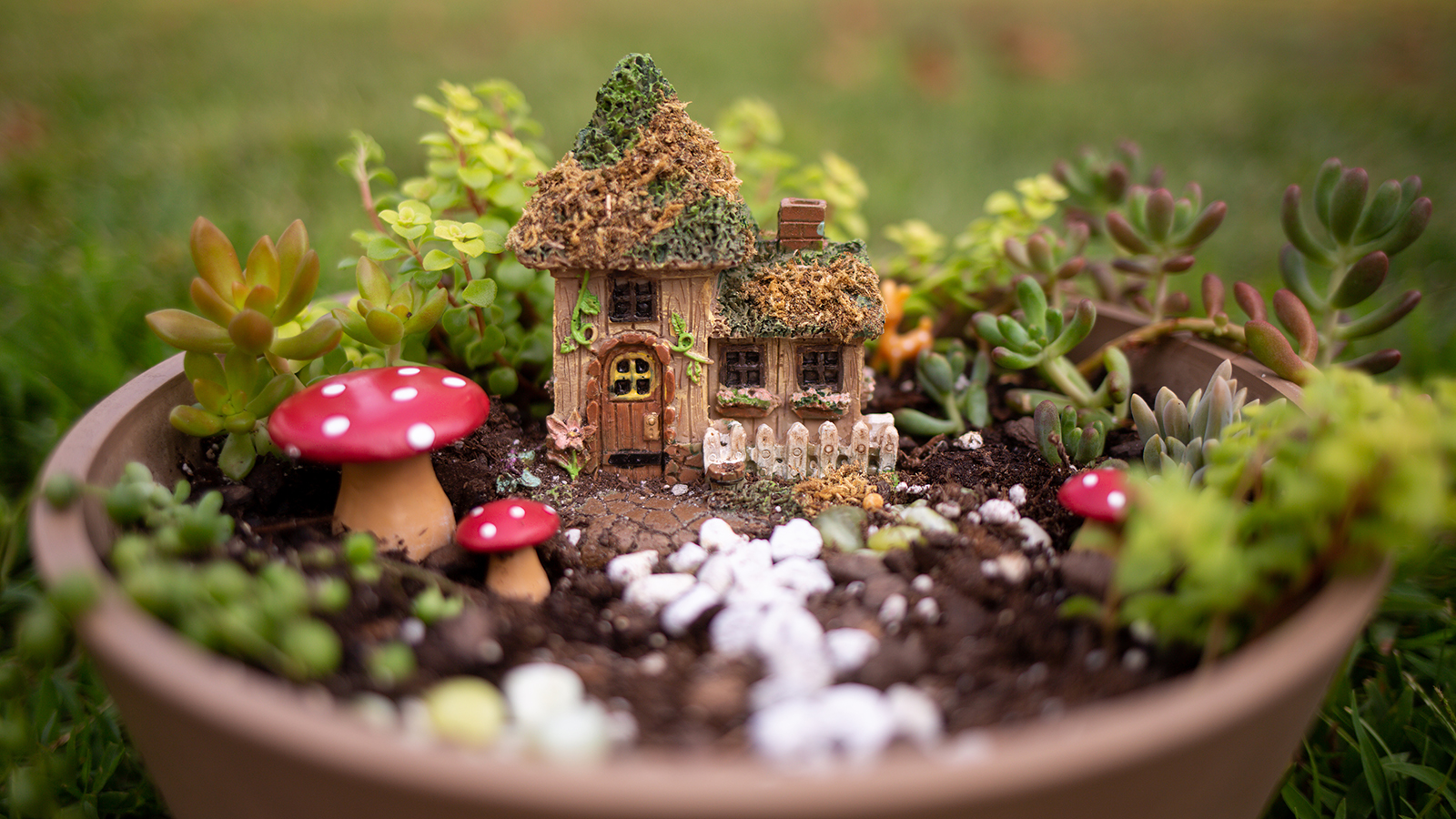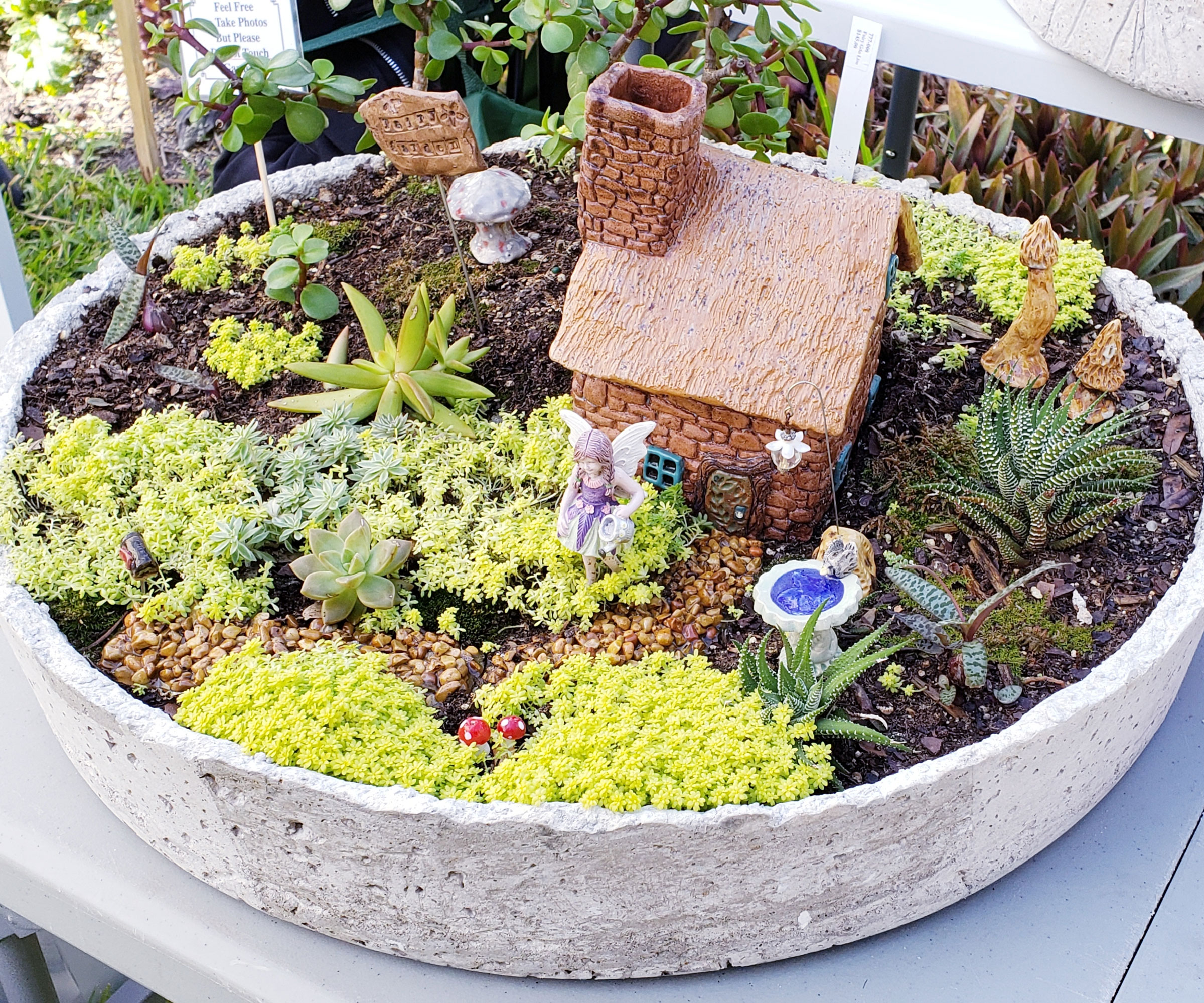Fairy Garden Ideas: How to Make a Magical Miniature Sanctuary in Your Garden
Create an enchanted miniature world with these fairy garden ideas and expert tips from author Betty Earl.


Fairy gardens. You may have heard about them. You may have even seen a few in your neighborhood. But what exactly is a fairy garden? A fairy garden is, quite simply, a miniature garden. It is a small space with small plants and small accessories that is built to be a garden for fairies to live in.
As Betty Earl, author of Fairy Gardens: A Guide to Growing an Enchanted Miniature World, explains, the goal is "to entice individuals to use their imaginations in creating a tiny, inviting world where they can play with fairies."
And they aren’t just for kids. While kids love them, they are also a popular and fun garden project for adults. Betty notes that for children, in particular, it is a "magical place, where imaginations run wild, where creativity is encouraged."
Keep reading our fairy garden ideas to find out how to turn your garden into a miniature sanctuary.
What Do Fairies Like in a Garden?
First, what do fairies like? To build a proper fairy garden, you need to attract fairies to it. According to Betty, folklore provides some clear guidelines on what fairies prefer.
"We are told fairies love their privacy and favor secluded parts of gardens... They are vain creatures who love to look at their reflections in water and mirrors or other shiny objects. Though it is said they prefer a slightly wild-looking garden, it is also true that they enjoy a clean yard devoid of litter."
So, when you are building your fairy garden, keep in mind these things that fairies like:
Sign up for the Gardening Know How newsletter today and receive a free copy of our e-book "How to Grow Delicious Tomatoes".
- Shiny things – Fairies are attracted to shiny objects. You can include small, shiny bits like marbles, small mirrors, or bits of polished stone.
- Water – Fairies love to look at their reflections. A small bowl of water or even a large shell filled with water will be a welcome addition to your fairy garden.
- Sweet-smelling flowers – A sweet-smelling garden will help to draw fairies in.
- Hiding spots – Fairies are shy. They need places to hide.
- Tidy space – While fairies like a slightly wild garden, they do not like litter.
Fairy Garden Design Ideas
A fairy garden can be built just about anywhere. You can build it in the ground or in a container.
In the Ground: If you build your fairy garden in the ground, find a quiet, out-of-the-way spot. A good place is at the base of a tree, in a quiet corner of your yard or even in an unused patch of your yard. This links back to the expert advice that fairies "love their privacy and favor secluded parts of gardens."
In a Container: A container is a very popular place to build a fairy garden. Betty Earl recommends this method for beginners.
"Start small, such as a container fairy garden," she says. "Here, your space is limited, and the number of accessories and plants will be limited as well. Remember, first and foremost, this is a garden – but on a small scale."
Broken pots, old wheelbarrows, wicker baskets, terra-cotta dishes, and wooden crates all make excellent fairy gardens. Just make sure that whatever container you use has good drainage.

Fairy Garden Plants
Once you have a location, you will want to add plants. You will want to look for plants that stay small or can be pruned to stay small. Good choices for fairy garden plants are:
- Herbs – Many herbs, like thyme, oregano, and sage, look like miniature versions of larger plants. Woolly thyme or creeping thyme also makes a great ground cover.
- Flowers – Plants with small, delicate flowers like lobelia, sweet alyssum, baby’s tears, and forget-me-nots are good choices.
- Succulents – A wide variety of succulents and hens-and-chicks are small and slow growing, which makes them perfect for a fairy garden.
- Foliage – Small ferns, ornamental moss (like Irish moss or Scotch moss), and miniature hostas are excellent for a fairy garden.
Fairy Garden Accessories
After you have the plants, you can add accessories. You can either buy these accessories or make your own.
- Structures – Fairy houses, gazebos, and arbors are popular additions.
- Furniture – You can add tables, chairs, and benches. Twigs and twine are all you need to make these yourself.
- Paths – Small pebbles, aquarium gravel, or even sand can be used to make paths in your fairy garden.
The most important part of building a fairy garden is to have fun and to let your imagination run wild.

Heather Rhoades founded Gardening Know How in 2007. She holds degrees from Cleveland State University and Northern Kentucky University. She is an avid gardener with a passion for community, and is a recipient of the Master Gardeners of Ohio Lifetime Achievement Award.